I am a 22 year old girl with a passion for animations of all kind, especially anime. I started this blog so I could give my opinion on different anime shows. In this blog I will mostly talk about anime, and compare them with animations of the world. I will talk about how are animations made, and if they are adaptions or not. Basically this blog is dedicated to anime.
Don't wanna be here? Send us removal request.
Text
News Update: Free! Sequel Anime Confirms Summer 2018 Broadcast!
Hit swimming-themed anime Free!'s official Twitter has confirmed a number of details regarding the upcoming new season, Dive to the Future, including a July broadcast date and the artist behind its opening theme.
youtube
The teaser PV reintroduces the familiar faces of Haru, Rin, Makoto, Rei, and Nagisa, who will be returning as college students. Many of the show’s original voice actors will also reprise their roles for the new season, including Shimazaki Nobunaga as Nanase Haruka, Suzuki Tatsuhisa as Tachibana Makoto, Miyano Mamoru as Matsuoka Rin, Uchiyama Kouki as Kirishima Ikuya, and Toyonaga Toshiyuki as Shiina Asahi.





The official Twitter also announced that the sequel's opening theme is OLDCODEX’s “Heading To Over”, to be released as a CD single on July 25.
Free!-Dive to the Future- will air from Jul. 2018 on ABC TV, Tokyo MX 1, TV Aichi, and BS11.

0 notes
Text
The German way: Ritter Rost (Knight Rusty)
Ritter Rost(Knight Rusty) is the title of a series of children's books with musical CD by Jörg Hilbert and Felix Janosa. The books each contain the story in prose, including the notes of each song. The narrator Fritz Stavenhagen introduces the weaknesses of the main characters. In addition, there are some cartoon videos in which well-known songs from the Knights Rust CDs are drawn, for example: "Paolo with the Pizzablitz", "How to cook the granny of Ritter Rost" and "Blechdance". These cartoons run irregularly in the broadcast with the mouse. Since 2013, under the title Ritter Rost - Eisenhart and fully dented also an animated film with the characters from the series and 2017 appeared with Ritter Rost - The Schrottkomplott a second part.

Embark on an adventure like no other with a very special knight in this imaginative animated family film! Rusty lives with his dragon Cole and faithful friend Bo in the kingdom of Scrapland, a magical world completely made of scrap-metal. With dreams of winning the great knights' tournament, Rusty acquires a speedy engine for his horse Chopper that propels them into first place. But when the engine turns out to be stolen from ambitious Prince Novel, brave Rusty must redeem his knightly honor, save the kingdom and prove that true friends always stick together.

Rusty is a knight who looks like an old cash register and lives in Scrapland, a kingdom made entirely of scrap metal. He acquires an engine for his horse Chopper that propels him into first place in a jousting competition but is shortly stripped of his victory and his knighthood when the evil Prince Novel reveals that the engine was stolen from him. With the help of Chopper, a dragon named Cole, and the princess Bo, Rusty must find a way to reclaim his honor and his knighthood. Meanwhile, Prince Novel has plans of his own: to take over Scrapland and place it under his tyrannical rule. Rusty and his friends must find a way to reclaim the kingdom and return it to its former glory.

Although it drags at times, KNIGHT RUSTY is a movie that younger and older kids will enjoy for both the story and the quality of the animation. Overall the characters are likable, and the animation has its own unique style. The acting isn't over the top, and there's enough happening for younger viewers to root for Rusty as he tries to reclaim Scrapland from the wicked Prince Novel. Unlike so many foreign animated films, this isn't a Disney or Pixar rip-off with screechingly annoying voices. Parents wary of all the screaming in many contemporary animated movies will be happy to note that the characters have even-keeled English accents. This alone makes the film enjoyable.

For families looking for an above-average animated foreign film, Knight Rusty is worthwhile entertainment.
youtube
1 note
·
View note
Text
News Update: Ensemble Stars Confirms Anime For 2019!
Popular idol-training smartphone game Ensemble Stars has confirmed a TV anime adaptation to be broadcast in 2019.
The key visual for the series released via the teaser website features idol group Trickstar. Appearances are also expected from groups fine, Akatsuki, UNDEAD, Knights, Ryuseitai, Ra*bits, 2wink, Valkyrie, Switch, MaM, Adam, and Eve, as well as Sagami Jin and Kunugi Akiomi.
The voice actors from the game are set to reprise their roles for the TV anime, which is being produced by David Production. Akira, the original scenario writer for the game, will handle series composition, with Kuwabara Satoru of Arte Refact producing the music, and Kato Tatsuya of APDREAM composing the score.
Ensemble Stars is slated to broadcast in 2019.

0 notes
Text
Top 5 Anime of the Week
5. How to keep a Mummy

Kashiwagi Sora is living a normal high school student life, when his "adventurer" father sends him a mummy from his travels in Egypt! Sora balks at the letter from his crazy dad ("I found a cool mummy, so I decided to leave it with you, son!") at first, but the mummy that emerges from inside the huge coffin is a mere 12 centimeters tall--small enough to fit in the palm of his hand... Not only that, it's shy, a crybaby, and most of all, heckin' cute. And so, Sora and ends up keeping the mummy, naming his new little buddy "Mii-kun." But living with a mummy might be easier said than done...!

4.Gauken Babysitters
After losing their parents in a plane accident, Ryuchi and his 2-year-old brother Kotaro are adopted by the chairwoman of Morinomiya Academy. She offers them a place to call home and a free tuition in her academy on the condition that Ryuchi, along with his studies, helps out the ‘Babysitters club’ which was made from the academy for the staff’s children.

So the story follows the Kashima brothers in their everyday adventures within and outside of the babysitters club and the Academy. They meet new people, make new friends, and share important moments with their new social circle. Every episode is made up of small individual stories where we learn more about the kids’ families, Ryu’s friends, classmates, and sometimes things about their past. The plot overall is pleasant and easy to follow, it will make you laugh, cry and be all like ‘THIS IS SO CUTE I JUST CAN’T’. The characters have unique and interesting personalities and it’s always fun to see what they will get up to.
youtube
3.Persona 5 the animation

In April, Ren Amamiya transfers schools for mysterious reasons—something to do with him getting a criminal record for committing grave bodily harm, with the conditions of his probation being to attend a new school far away. A friend of his parents named Sojiro Sakura agrees to take the boy in for reasons of his own, so a reluctant Ren begins his new life. He deletes a mysterious red app from his phone before arriving at Sojiro's house, but the app reappears as he's going to bed for the night. He dreams of a strange place known as the Velvet Room where a man named Igor tells him that there's a way to break free of the chains binding him. The next day, when another red screen on a new classmate's phone leads them into a trap, a persona know as Arsène appears to help Ren. Somehow, all of this will lead to Ren falling back into police custody by November.
youtube
2.ReLife
Dismissed as a hopeless loser by those around him, 27-year-old Arata Kaizaki bounces around from one job to another after quitting his first company. His unremarkable existence takes a sharp turn when he meets Ryou Yoake, a member of the ReLife Research Institute, who offers Arata the opportunity to change his life for the better with the help of a mysterious pill. Taking it without a second thought, Arata awakens the next day to find that his appearance has reverted to that of a 17-year-old.

Arata soon learns that he is now the subject of a unique experiment and must attend high school as a transfer student for one year. Though he initially believes it will be a cinch due to his superior life experience, Arata is proven horribly wrong on his first day: he flunks all his tests, is completely out of shape, and can't keep up with the new school policies that have cropped up in the last 10 years. Furthermore, Ryou has been assigned to observe him, bringing Arata endless annoyance. ReLIFE follows Arata's struggle to adjust to his hectic new lifestyle and avoid repeating his past mistakes, all while slowly discovering more about his fellow classmates.
youtube
1. Darling in the FranXX

In the distant future, humanity has been driven to near-extinction by giant beasts known as Klaxosaurs, forcing the surviving humans to take refuge in massive fortress cities called Plantations. Children raised here are trained to pilot giant mechas known as FranXX—the only weapons known to be effective against the Klaxosaurs—in boy-girl pairs. Bred for the sole purpose of piloting these machines, these children know nothing of the outside world and are only able to prove their existence by defending their race.

Hiro, an aspiring FranXX pilot, has lost his motivation and self-confidence after failing an aptitude test. Skipping out on his class' graduation ceremony, Hiro retreats to a forest lake, where he encounters a mysterious girl with two horns growing out of her head. She introduces herself by her codename Zero Two, which is known to belong to an infamous FranXX pilot known as the "Partner Killer." Before Hiro can digest the encounter, the Plantation is rocked by a sudden Klaxosaur attack. Zero Two engages the creature in her FranXX, but it is heavily damaged in the skirmish and crashes near Hiro. Finding her partner dead, Zero Two invites Hiro to pilot the mecha with her, and the duo easily defeats the Klaxosaur in the ensuing fight. With a new partner by his side, Hiro has been given a chance at redemption for his past failures, but at what cost?
youtube
0 notes
Text
Manga Adaptation:Black Butler (Kuroshitsuji)
Kuroshitsuji (黒執事, Black Butler) or Black Butler is a manga written and illustrated by Yana Toboso.
Kuroshitsuji follows the adventures of Earl Ciel Phantomhive and Sebastian Michaelis, his demon butler, as they take up missions Queen Victoria assigned in order to solve certain mysteries. Although complying with her orders is his preliminary task, Ciel also seeks revenge on those who have shamed the Phantomhives and risks his soul for consumption to Sebastian in order to fulfill this.
The manga series has been adapted into an animated television series (i.e. anime), musicals, OVAs, and a video game.
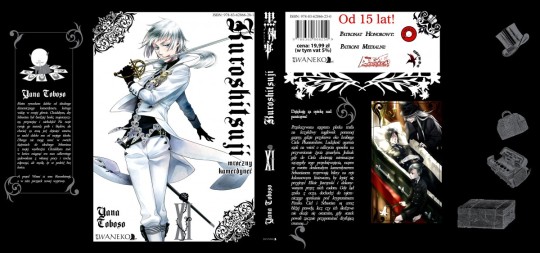
In a manor house on the outskirts of the Victorian era in London, butler Sebastian Michaelis serves Ciel Phantomhive, the head of an English noble family as well as a toy, food, and candy empire, Funtom Corporation. Sebastian obliges to any task required by his master and solves the problems plaguing England effortlessly due to his demonic lineage and Faustian contract with his master.
The anime and manga of Black Butler, also known as Kuroshitsuji, have a vast amount of differences, sharing few similarities.
The series has been licensed by Yen Pressin North America and published in Yen Plus ' August 2009 issue for the magazine's first anniversary.
A 24-episode anime adaption, directed by Toshiya Shinohara and produced by A-1 Pictures, aired from October 2008 to March 2009. The second season, Kuroshitsuji II, aired in 2010 spanning 18 episodes with two new main characters, Alois Trancy and Claude Faustus, following the aftermath of the first season. This series was the anime's own adaptation and did not feature in the manga." (Source: Wikipedia).
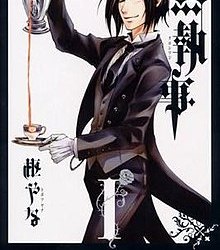
First off, I will state the similarities!
1.) Beginning
The first similarity is that they both start off about the same way. The first five or so episodes follow the manga almost perfectly. The series begins with the introduction of the main cast and plot. It is revealed that the amazingly perfect butler, Sebastian Michaelis, is a demon, and a thirteen year old kid has made a contract with him. All of this is the same in both the manga and anime.
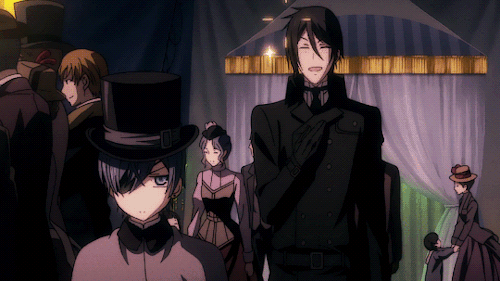
2.) Jack the Ripper and Curry Contest story arks
The Jack the Ripper and Curry Contest story arks are almost the only to plot points that are the same in both the anime and manga. Jack the Ripper is the introduction of quite a few characters, as well as the Curry Contest. It introduces, Madam Red, Grell, Angi, and Prince Sohma, characters that are plot-relevant.
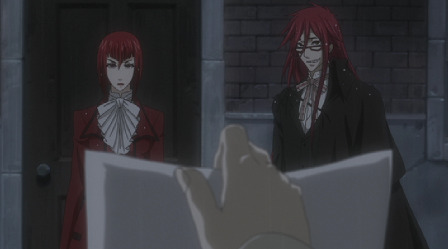
3.) Character and Their Designs
Most of the characters in the anime and manga look and act similarity. They all appear to look like they do in the manga, and act almost the same. Sebastian is still a sexy butler, Ciel an adorable eye-patch wearing kid, and Tanaka, a humble old man. Their all the same! Props to the anime for not changing it!
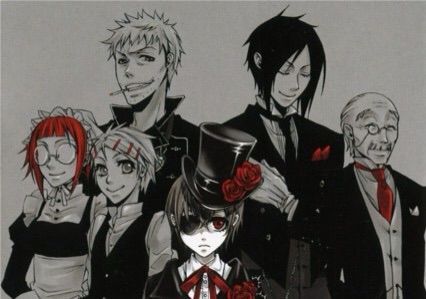
1.) The Plot/Story Arks
The story arks are almost completely different after Jack the Ripper, splitting off into two different stories. The anime goes on and changes many things, such as making angels and adding more demons, having Queen Victoria become young and decomposed or something. This all led to a different ending than what the author of the manga has planned. The manga developed the characters more and has much more interesting story arks that would've been amazing to see animated. For example, the Zombie Ark. It was very interesting and would've been great in the anime.
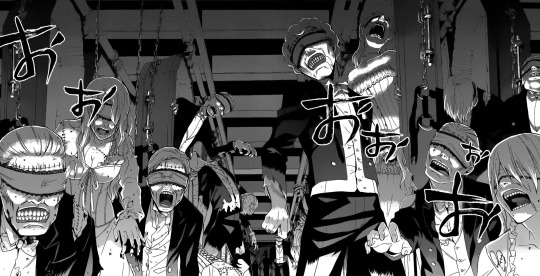
2.) Characters Added and Left Out
The characters aside from the main cast are different in the manga and anime. In the anime, there are characters that shouldn't exist for the better of Black Butler. For example, Claude and Alois. For me, they are the ones that ruined the anime and I love the manga for not having them. There are also some characters like Elizabeth's mother, John Brown, and Diederich that would've been great to see in the anime. Also, you could've seen more of Vincent Phantomhive instead of Claude and his little brat Alois.
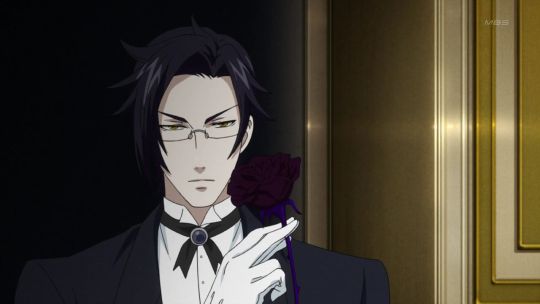
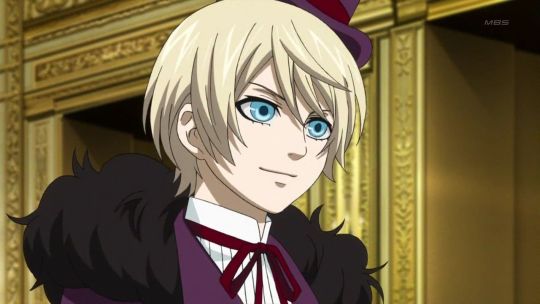
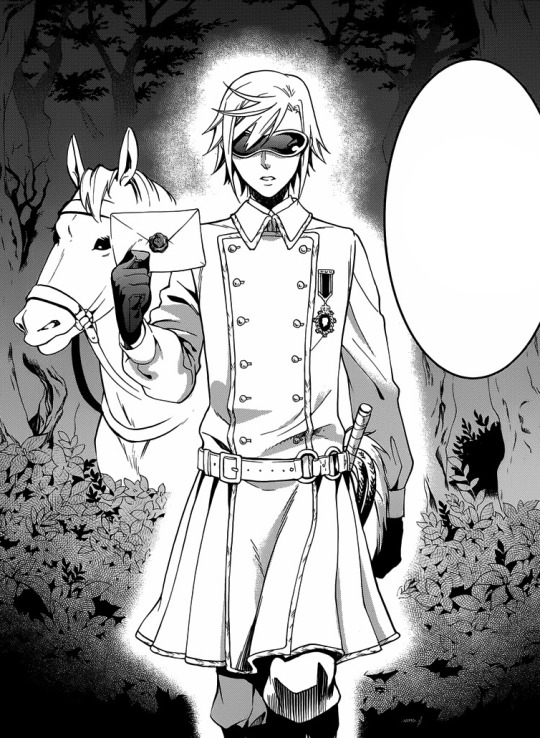
3.) Ciel's Current Well-being
In the manga, Ciel is still his thirteen year old self. He has become more mature and possibly a tastier soul for Sebastian. However, in the anime, he was turned into a demon at the end of season 2. This, was entirely different from where the manga has gone and will go (hopefully). It was completely unnecessary. What was the point of the rest of the series if you just ruin it there? Sebastian will forever be tortured and possibly starve more. They took away his perfectly cooked meal. This difference made the anime into garbage for me, and was a horrible way to change the plot.
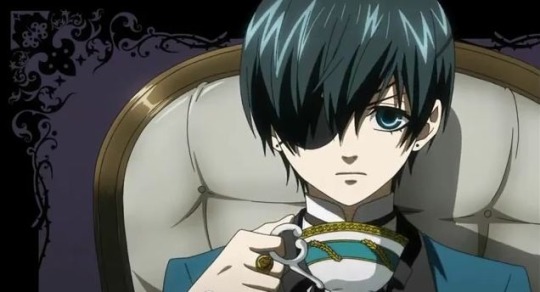

More so the Manga is more preferable over the anime since The continuity in the anime is truly bananas. If you want it to make sense, then definitely watch it in the order suggested by others in this thread. That being said, if you watch the only first season from start to finish, it's a well-written, cohesive, and self-contained story. It has a good flow to the episodes and has (in my opinion) a satisfying ending. It starts getting confusing in the second season because it's very hard to tell what is and isn't carried forward from the ending of the first season. The second season may or may not be worth watching. For me, its episodes are hit-or-miss, and the closer I got to the end of the second season, the more it felt like I was watching bad fanfiction. (I haven't seen/heard many others who dislike the second season so I might be in the minority here.) Since the "Book of _" seasons are taken straight from the manga, they're well-written and have continuity.
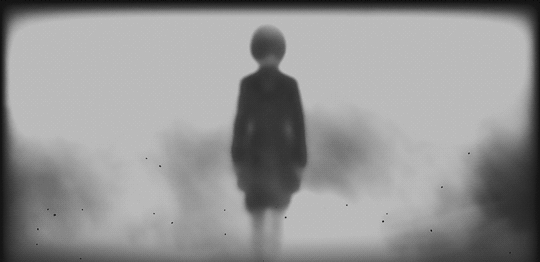
The manga has all of the story arcs (to varying degrees), and it has continuity so you won't be confused reading it (without having seen the anime). It also has more story arcs than the anime so if you're dying for more story, there's plenty there for you. There is, however, one GIANT advantage to reading the manga over watching the anime, and that's you'll be able to look for clues for certain upcoming story arcs and plot points.
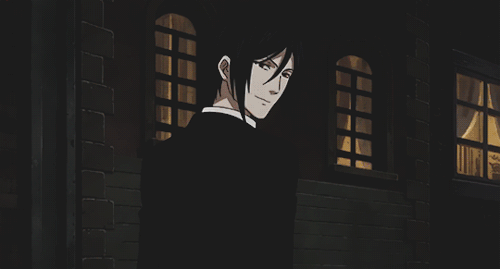
The manga has a great art style and although may be somewhat boring in the beginning (because it's aimed to get the reader to understand the characters more), the storyline progresses further and is more intricate/elaborate compared to the anime. The anime, due to restricted time, lightly touches upon the story and can be somewhat confusing if you haven't already started to read the manga.
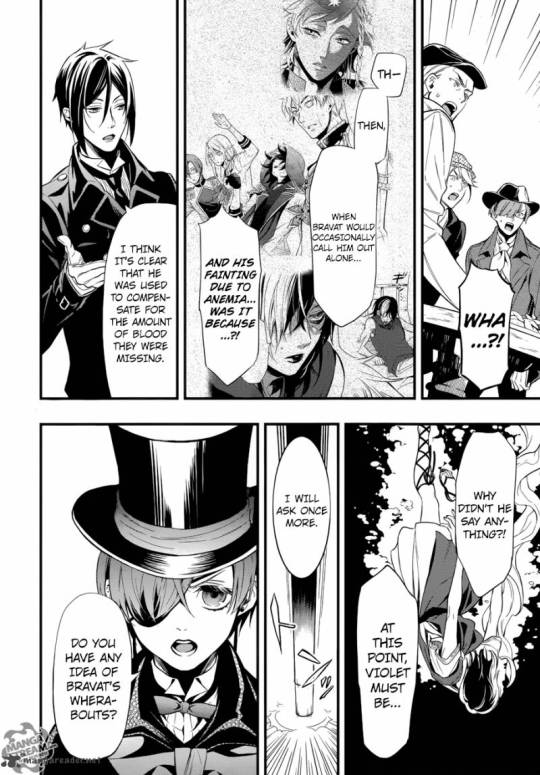
youtube
0 notes
Text
Techniques and Styles: 3D animation of Zootopia
Advanced 3d animation characters are substantially quicker to make and they are very famous in the film making industry. Utilizing a PC programming 3d energized pictures are utilized to make numerous short movies, full length films and even television advertisements and a vocation in computerized 3d animation is exceptionally fulfilling. Contrasting with 2D animation and the customary approach, 3d animation models are profoundly reasonable.

The animation techniques of 3D animation has a lot of similarities with stop-motion animation, as they both deal with animating and posing models, and still conforms to the frame-by-frame approach of 2D animation, but it is a lot more controllable since it’s in a digital work-space.
Instead of drawn or constructed with clay, characters in 3D animation are digitally modeled in the program, and then fitted with a ‘skeleton’ that allows animators to move the models.

Animation is done by posing the models on certain key frames, after which the computer will calculate and perform an interpolation between those frames to create movement.
When the modeling and/or animation is complete, the computer will render each frame individually, which can be very time-consuming, depending on the quality of the images and the quantity of polygons in the scene.
a 3D animator will spend most of their time looking at curves that represent the movement of different body parts over time.
Another big difference with 3D animation is that unlike traditional animation, the character’s body parts are always present and should be taken to consideration.

There are different techniques of 3D animations :
3D animation- Pixar's Up, Toy Story
Stereoscopic 3D - Coraline, Avatar
CGI cut out - South Park
Motion Capture (an aid tool for 3D animators)- Final Fantasy, Avatar, Gollum in Lord of the Rings.
Morphing (If you're old enough to remember the changing faces in Michael Jackson's Clip Black or White? that's Morphing.)
A 3D production starts with the conceptualization of ideas and creation of storyboards that translate these ideas in to visual form. Once the technical requirements have been defined, the next step is to begin the storyboarding. Storyboards consist of hand drawn version of the video and give out as blue print for the action and dialogue.

Animatic simplified mock-ups are created to get a better idea of the motion and timing of complex animation sequences and VFX-heavy scenes within the VFX studio. These help the animator in planning the sequence and move forward with integration of visual effects into the final shot.
After the approval of story board, next task starts Modeling that is building the props, environment and characters. Modeling a process where thing start getting shape and molded in to complete 3D mesh. Creating 3D objects means taking a simple object called as primitive and extend or grow it into a shape that can be refined and detailed. It can be anything from a single point, a two-dimensional line, a curve, to three dimensional objects.
In modeling phase, assets for the animation are drawn or modeled in two or three dimensions. On the bases of the resolution of the final image as well as how close the camera gets to a model in the final animation level of detail will be required for a given model are determined.

Texturing means the art of providing clothes to the 3D models. During the 3D model creation 2D images are overlaid on it to add colors, designs, and textures. This is called mapping and often total o model’s color comes from this. These are created using software programs like Photoshop etc , even real photographs are used for the textures, they are simply captured and then altered to make seamless repeatable patterns. Specific properties like shininess, transparency, translucency, reflectivity, texture, and of course, color are added.
Texturing artists are responsible for writing shades and panting textures as per the scene requirements, whether they are creating from scratch or editing the existing image. Texture are painted according to the concept art and design texture are created in the form of maps which are further assigned to the model.

We need to put structure in to the 3D character before moving further. This stage is called ‘rigging and skinning’ and is the original system that drives the movement of a character to bring it to life. In rigging bones are added to the character or movements are defined of mechanical object and it is the central to the animation process. Depending upon the subject matter, every rig is unique and so is the corresponding set of controls. Skinning is the process where 3D model are attached to the rigged skeleton so that the 3D model can be manipulated by the controls of the rig.
Animation is the process of getting 3D object move. Here the animator manipulates the objects on a frame-by-frame basis. And other method are also used like placing objects on spines and setting them to follow the path of the curve, or importing motion capture data and applying it to a character rig. We can also use 3D applications built-in physics engines, such as when your scene requires that objects fall.
Animation is the most crucial and time consuming part of the production process. Crucially of animation depends on the type like for character animation, it is timing, fluidity of motion, and expressiveness that are most crucial. And for forensic or product animations, the goal is precision of motion or technical accuracy. Using animation software they compose the movements and facial expressions in each scene. The motion in each scene is composed by defining key frames or poses. This is done using computer controls and the character’s avars to define key poses. The computer then creates the “in-between” frames, which the animator adjusts as necessary.

Lighting is important for creating realism and appealing to an image. Use of improperly light can wash out the scene, can make object appearance different and destroy all the hard work. But skillfully applied lighting can make a scene convincing, or if realism is the aim, create, a scene that is virtually indistinguishable from real life. Lighting allows us to control the appearance of shadows and highlights, and cameras can be added to capture a specific point of view. Visual effects can be added as required, including glows, fire effects, fog, and lens flares.
In 3D camera works as an amazing tool here there is no physical limitation as like in real world. You can create scenes where the camera can take you, like you can journey inside the blood vessels of a human body, it can be used in creating impossible perspectives. You need not to have a lens, focusing controls, film, aperture, etc. All of these functions are controlled via software. In 3D, you can create one or more cameras, position them exactly as desired in 3D space and use settings to mimic focal length, depth of field, etc.

In addition, software cameras have no size or weight restrictions. You can move a camera to any location and even inside the tiniest objects. You can also animate cameras so that several operations take place at once, such as a zooming into a scene while changing the depth of field. Once you create a camera in 3D, you can pick a view and assign the view in that view to the camera, meaning that you will see the scene from the perspective of the camera.
Rendering is a process of translating all of the information in the files that make up the shot, (sets, colors, character movement), into a single frame of film. It is one of the most important and last step in 3D production pipeline (but not last step in overall 3d Production). Rendering takes all of our work thus far and calculates the individual pixels for each frame, based on models, materials, lighting, and effects. Different rendering algorithms can create different results, ranging from photorealistic results to even a cartoon illustrated look. It is necessary to take care of many aspects to create a good final render of a scene, including attention to camera placement, lighting choices which may affect mood and shadows, reflections and transparency, and the handling of special effects, like fluids or glasses.
In rendering we have to take care of individual pixels for each frame, based on models, materials, lighting, and effects. Different rendering algorithms are required to create different results, ranging from photorealistic results to even a cartoon illustrated look. Rendering process is quite CPU intensive process and takes time. Consider a 60 second DVD animation where each frame takes 15 seconds to render: A 60 second animation for DVD (at 30 frames per second) requires 1,800 frames, which will take over 7 hours to render.
The renders are brought into compositing programs to edit, touch-up and add on special effects. Composting consist of everything from special effects to where things blow up, evaporate, morph etc. it also includes creation of environment according to the requirement as (anything from buildings to complete worlds), to blue/green screen replacement (shooting in-front of a blue or green screen and then replacing the background with digitally created footage or footage shot elsewhere). Creating computer generated footage from the live footage is also considered as compositing.

Music and foely provides animation an additional extra depth and boost in audio enjoyment. To set the mood for the animation music composer creates music soundtracks and accompaniment music. A foley artist work is to create sound effects, using different kinds of shoes and lots of props – car fenders, plates, glasses, chairs, etc. Foley artist create or replace original sound completely or augment existing sounds to create a richer track.
The editing is the final stages where all the things are confirmed before delivered to the client. Here the composited renders, music and foley are compiled and edited to ensure that everything is in synchronization. Editorial checks for the completion and addition of the musical score and the other sound effects. Special effects are added and record the digital frame to film or to a form appropriate for digital production.
Here a list of softwares 3D animation is done on:
Autodesk Maya
Autodesk 3DS Maya
Cinema 4D
Blender
This is how the above theory is explained in real life. The process of the 3D animation of Zootopia:
youtube
youtube
Computer animation evolves at an alarming rate. One year, a movie like Frozen or Big Hero 6 looks like the peak of what’s possible. Then, only a year later, the next thing goes way beyond that. In this case, the next thing is Zootopia, and in this movie a single giraffe has more individual hairs on it—nine million—than every single character in either Frozen, Big Hero 6, or Wreck-It Ralph.
Keep in mind that the filmmakers had to manipulate each individual hair on its own—and there would have been a lot of hair even if they hadn’t gone to such lengths. The film is, after all, about animals who walk, talk and dress like humans. Animals mean fur, and that’s something Disney Animation hadn’t done for a lead character since 2008’s Bolt. And even that was just a single character. So to make an entire movie full of furry animals, they had to create a whole new language in the computer to make it possible.
After doing tons of research on real animals both in nature, and in museums, the team came to realized that almost every single type of fur is different. They have different sizes, textures, densities and colors—and with each of those kinds, light passes through them in a different way.
Zootopia has 64 different species of animals, that break down into about 800,000 different character models. To get the right level of realism, hair has to be treated as multiple pieces, and not one cohesive thing.
The following is how Disney used the Fur technology:
youtube
Zootopia animators on the process of animating ‘Zootopia’:
youtube
0 notes
Text
Inside Out: A roller-coaster of emotions
A standout amongst other things a film can do is influence you to cry. Throughout everyday life, we make a special effort to maintain a strategic distance from sadness, yet with regards to the motion pictures, two hours of repugnance, deplorability and mortal fear can exclude as a fun night.
Most reasoning on the issue gestures towards a similar conclusion: the feelings we consider as negative aren't negative by any stretch of the imagination, yet essential reactions to disagreeable conditions which, all by themselves, are just as sound and human as chuckling.
It's simply because film enables us to encounter them without justifiable reason that we can truly excite to their power, and feel them scouring ceaselessly at the structures of our spirits. Watch Stella Dallas, Bambi or The Notebook, and everything turns out to be clear. Joy and Sadness aren't alternate extremes, they're partners.
That idea may have never been expressed with quite as much elegance and human warmth as it is in Inside Out, the 15th film from Pixar and, I think, the animation studio’s finest to date. It takes place in two places at once: San Francisco, where 11-year-old Riley (Kaitlyn Dias) has recently moved with her parents from the rural Midwest, and inside Riley’s mind, where her five emotions – Joy, Sadness, Anger, Fear and Disgust – are trying to make sense of the upheaval.

It’s as bizarre, imaginative and authentically psychedelic as anything produced in mainstream animation. At this point in the fortunes of the once-infallible creative powerhouse, you wouldn’t have bet on Pixar coming up with anything very outré.
The story happens generally in the leader of a 11-year-old young lady named Riley (Kaitlyn Dias), who has quite recently moved with her folks (Diane Lane and Kyle MacLachlan) from Minnesota to San Francisco. The end result for Riley outwardly is truly standard: a supper table contention with Mom and Dad; a harsh day at school; a disillusioning hockey tryout. However, any individual who has been or known a kid Riley's age will comprehend that such everyday happenings can be the stuff of real inside dramatization.
Joy (a note-perfect Amy Poehler) is the gang’s leader. She looks like a star from a picture book, and shoots around the gleaming modernist dream-space of Riley’s HeadQuarters, doling out orders and pep-talks to her fellow emotions, whom she clearly considers her assistants. That’s because Joy has a particularly intimate bond with her human: since day one, Riley has always been her parents’ happy girl.
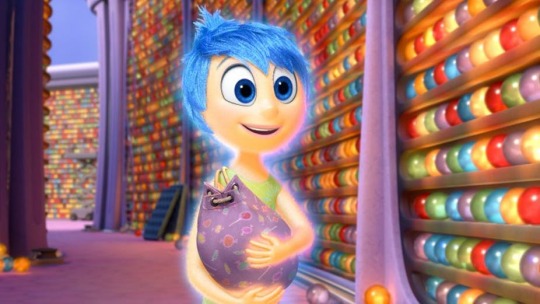
It’s actually a sophisticated bit of story construction, a nifty balancing act between Riley in the External World and her metamorphosis, and Joy (primarily) and the other emotions in the Internal World and their transformations, both individually and collectively.
What’s really powerful about this film is how accurate it is to cognitive, developmental, and clinical psychology. The 5 emotions used in this film are in fact 5 of the 6 scientifically validated universal emotions (the 6th one being surprise).
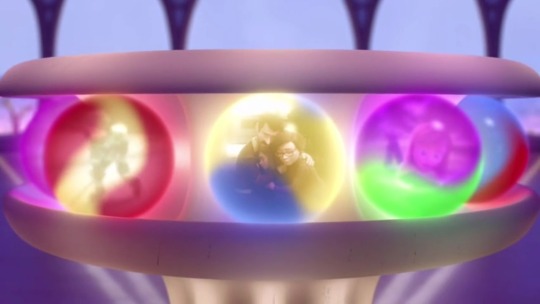
Formidably ingenious, Inside Out hits an elusive sweet spot in terms of appealing to children and adults alike. It makes extraordinary use of knowing cuteness, for example. Take Bing Bong, Riley’s long-lost imaginary friend from early childhood, a cat-elephant hybrid made out of candyfloss. Here, the film seems to stray perilously into Jar Jar Binks territory – but while smaller children will warm to Bing Bong as a cuddly oddity, adults and older kids will see something quite troubling in a figure that’s manifestly a primitive creation of the infant mind, poignantly fated to extinction.

It's in the way that the story portrays the blurring of youth's psychological furniture, and investigates the mechanics of overlooking, that Inside Out accomplishes a general centrality. While pros may weep over the effortlessness of the film's psychological model, propelled by the "psychoevolutionary" hypothesis of Robert Plutchik, the possible message – that distress is as profitable a feeling as satisfaction – is conveyed with less devotion than you may envision.
Concerning the visual style, it's amazing, ridiculing CGI's propensity to photorealism for unmistakable cartoonishness in a 1950s retro vein, together with a refined investigation of light: the feelings are made out of sinewy packs of iridescence. The running stiflers are delectable (don't miss the end credits), and in the best Pixar mold, Inside Out expertly however uncynically pulls the heartstrings – and in reality, the film's subject clearly demonstrates to you how it's finished. Try not to be hesitant to leave Inside Out wiping a tear from your eye: you can simply say: "It was the little individuals in my mind that did it."

The achievement of “Inside Out” is at once subtler and more impressive. This is a movie almost entirely populated by abstract concepts moving through theoretical space. This world is both radically new — you’ve never seen anything like it — and instantly recognizable, as familiar aspects of consciousness are given shape and voice. Remember your imaginary childhood friend? Your earliest phobias? Your strangest dreams? You will, and you will also have a newly inspired understanding of how and why you remember those things. You will look at the screen and know yourself.

The best children’s films often serve a dual purpose. They help kids to grow up but they also remind adults of what they have lost by doing so. Inside Outsucceeds brilliantly on both counts.
It takes a lot of work for voice actor to produce the voices for animated characters, that’s why directer Pete Docter asked them to wear costumes what their charcters wore to get into their characters feel. Here is a sneak peek behind the scenes of what went down when they had started recording:
youtube
Regarding the animation of Inside out they used 3D models mainly to create their characters. After which they created rough physical cameras and attached sensors to them. They projected those cameras into the virtual world and had human operators walk around a physical space, allowing all of the subtle details of a camera operator’s ‘performance’ to inform the scene.
Here is sneak peek into how Pixar developed the characters for ‘Inside Out’:
youtube
It is especially important to know about the story of Inside Out and how it came to be, so here is an interview of the Director Pete Docter:
youtube
0 notes
Text
News Update: Bleach Live Action Film ?!
Yes, you heard it! The ever famous ‘Bleach’ anime and manga, is being adapted into a LIVE ACTION FILM!

Bleach’s anime is produced by ‘Studio Pierrot’ while directed by Noriyuki Abe. Originally it’s manga was written by Tite Kubo. Bleach is one of the most popular manga read all over the world, with 120 million volumes in print worldwide. More so than that its anime has even more audience, with 366 episodes which ran on air. Bleach has been aired in the UK, Canada , US and all major foreign countries of the world.

Bleach basically follows the main protagonist ‘Ichigo Kurosaki’ who obtains the powers of the Soul reaper (Death God) from another Soul Reaper named ‘Rukia Kuchiki’. After becoming a Soul Reaper, he is appointed duties which pertain him to defend humans from evil spirits and guide the departed souls to the afterlife.

After the amazing success of the anime we finally get to see its live action film. So without further ado, here is the first ever trailer of the film!
youtube
After watching this you would know who are the main lead playing the characters. That’s right! It’s Sota Fukushi playing as Ichigo and Hana Sugisaki playing as Rukia. Both of them starred together in the Mike Takashi’s 2017 ‘Blade of the Immortal’.
Not to mention here is sneak peak at Rukia’s look in the film:

Not only that, but the main supporting actors have been revealed too!
Abarai Renji, Gotei 13's 6th division lieutenant will be played by actor Taichi Saotame.

Kuchiki Byakuya, Gotei 13's 6th division captain and Rukia's brother, is to be portrayed by actor Miyavi.

Finally, Ishida Uryu, a Quincy and Ichigo's friendly rival, will be played by Yoshizawa Ryo.

Bleach premieres in Japanese theaters on July 20, 2018. Make sure you don’t miss out on this amazing film!
References:
https://twitter.com/bleach_moviejp
0 notes
Text
La French: Ernest & Celestine
It was released in 2012 and directed by Benjamin Renner, Stéphane Aubier and Vincent Patar. “Ernest & Celestine” is an animated comedy-drama film based on a series of children’s books by the Belgian author and illustrator Gabrielle Vincent. It received wide critical acclaim and won many awards like the Magritte Award for Best Film.

The story revolves around two animals Ernest: The bear and Celestine: The mouse. Celestine lives in an Orphanage amoung other mice, where the caretaker tells them scary stories about bears and how they eat mice up. Celestine wants to draw but must become a dentist no matter what. Thus she needs a bear cub tooth, upon trying to get one she is surrounded by bears. Ernest in the intent of eating her is convinced by Celestine not to, and takes him to the basement of a candy store where he gets filled up. But he is found by the store’s owner and is soon arrested. In the promise of breaking Ernest free, in return he has to get Celestine teeth from the store owners wife who is also a dentist.

After the robbery, both mice and bear police forces are looking for them both for their acts. Reluctantly Ernest lets Celestine live with him, but they become to know each other more after he finds out Celestine’s love for art. After which he tells her that his family abandoned him after finding out he didn’t want to study law as they wished but instead be an entertainer. They both spend winter together, alas the police is till searching for them.

Upon the arrival of Spring the police forces catch the both of them. Both of them are held for trial, where both of them refuse to give each other up. The judges become furious and become very harsh with the two. Both companions tell the judges how they and the higher class, pursue cruelty on the lower common folk such as they are.
During the trial a fire accidently starts in the courthouse, where all the high class flee while both Ernest and Celestine stay to save the judges. Broken at how their citizens which they ruled over betrayed the. The judges admitted defeat and dropped all charges of the companions because of their goodwill. Still the judges could not comprehend their bond.

Ernest and Celestine go back home and live together, while they write a book about their adventure and how they met.
The drawing and animation is a big part of what makes the film so unique. The characters are hand-drawn and aren't overly elaborate. The colors are toned down but rich, and very well coordinated. The settings are spectacularly designed but very minimal as well. The action scenes are so beautifully done and coordinated as well, that you would just want to watch those over and over again. As said by animator Benjamin Renner, it was made with a sketch type of look.
Unlike Japanese anime, this has a more rough and home feel. Where anime is 2D animation, this had more of a sketch drawing coming to life feel. Since it was made initially for the kids, this type of animation would be more magical for them.
There are so many themes and messages in this film to count. It tells us about the social differences of lower and higher class/ race as well.Which ties in to the movie's ultimate message, a good one for children and adults alike, a message about how our superficial differences should not be in the way of friendship. Moreover there is the theme of your own self and careers. Of how your family or society wants you do something but you as a person want to do something else, which makes you YOU. This in particular is a message for the parents to not force the children to do something, they do not want to. If someone has a talent for something they should opt for that.
This film isn’t just for parents but adults as well, to open their eyes to the world, and to be reminded of the lessons they had learnt before.
It is a must see film, if you haven’t seen it yet here is a trailer to give you a sneak peek:
youtube
References:
Wikipedia.com
0 notes
Text
News Updates: Sword Art Online Season 3 releasing in October

The ever popular anime ‘Sword Art Online’ produced by A-1 Pictures and written by Reki Kawahara. The story follows the main protagonist Kirito through VR MMORPG (Virtual Reality Massive Multiplayer Online Game), with his many adventures through that.
But more than that its finally here! It will release in October 2018, so we don’t have to wait no more!. Season 3 will more epic than the last Season!
Season 3 will be directed by ‘The Irregular at Magic High School’s’ Ono Manabu with character design by Adachi Shingo. Voice actor Matsuoka Yoshitsugu will return as Kirito alongside Tomatsu Haruka as Asuna, Kayano Ai as Alice, and Shimazaki Nobunaga as Eugeo.
Here is a little sneak peek at what it looks like:
youtube
0 notes
Text
Top 5 Anime of the Week
5. A Place Further then the Universe

A Place Further Than The Universe, or Sora yori mo Tooi Basho, is produced my Studio Madhouse and written by Jukki Hanada. It has a plot that sounds incredibly simple at first but has incredible sentiment. The story is about a girl ‘Mari Tamaki’ who at 16 years old always backs out of aventures or something interesting. But she meets another girl Kobuchizawa Shirase along her way, who is on an adventure to find how and why her mother went missing at the Antartic, so she travels there to find out why. Mari curious to it all, joins her on her journey and both girls travel there and find out the mysery of it all. This anime if you look detail by detail, has a very slice of life feel. But I recommend is a must watch!

4. Violet Evergarden

This anime is produced by Kyoto Animation and written by Kana Akatsuki. It is a one of kind anime, with a never before heard plot. Its something so unique with fresh ideas, that you would want to keep watching it. The Universe is home to auto-memories dolls, which are mechanical dolls being used to record people’s emotions and speech. While more people have been finding use for the dolls recently, they were originally created with the sole purpose of helping the inventor’s blind wife write a book. Violet Evergarden is one of the newer versions of these auto-memories dolls, which have now been given military functionality as well. Violet had spent most of her life as a child soldier but after the war, she becomes lost and is taken in by Lt. Colonel Hodgins. It then revolves around her new life with Hodgins and how as a robot she starts to become more human.

3. The Disastrous Life of Saiki K.

This anime is produced by J.C. Staff and EGG Firm while it is written by, Michiko Yokote. This show revolves around the story of Saiki K. who has been given psychic powers like telepathy and more. While most people would kill for such powers he just doesn’t want them. He tries to live a normal life at P.K. Academy but it is difficult most of the time. The show is a humorous gag anime as how Saiki deals with all the difficulties of being a super-human, with a comedy laced narrative of course. I would recommend this as one of the best shows so far for the comedy genre, if you want to laugh your hat off.

2. B: The Beginning

B: The Beginning is produced by Production I.G. and written by Katsuya Ishida. In this world with a far more advanced technology their own, filled with action and crime located in Cremona. It revolves around the Royal Investigation Service as it goes after a well known serial killer known as ‘Killer B’. The one investigating the killer is ‘Keith’ who has a Sherlock Holmes type persona, with a help of Koku a mysterious black winged boy and Lily (his sidekick), they try to solve the case, before its too late.
All in all it is like a suspense filled crime thriller, with various twists and turns with a hint of a dark aura surrounding the show. But in my opinion the best part would be how the characters work with each other, consider how their personalities clashing; working with each other in that way to solve the case.

1. Black Clover
Black Clover is produced by Xebec and written by Yuki Tabata. The story is set in a world filled with magic. Where two boys Asta and Yuno who abandoned at an Orphanage were raised together, thus becoming very close with each other. Yuno was a magical genius, while Asta had no such magical powers so to compensate that he trained psychically. At 15 years of age both boys become Magic Knights by receiving grimories through which all magic powers are channeled, While Yuno gets his Asta gets nothing. Soon Asta discovers his own grimory which is an ‘Anti-Magic’ the most powerful of them all. Both Asta and yuno is separate Knight Squadrons, contain a friendly rivalry between them to see who become the Wizard King of the realm.

In my opinion this is a fantastic show! It has everything action, fantasy, drama, feels and so much more. You get action packed fight scenes, full emotional ones where we see the characters vulnerable even though they are Knights. This is one show you can not miss!
0 notes
Text
Manga Adaptation: Koe No Katachi ( The Shape of Voice)
Koe no Katachi (聲の形, lit. "The Shape of Voice") is a Japanese manga series written and illustrated by Yoshitoki Oima. Koe no Katachi is also known as A Silent Voice to English fans.
Koe no Katachi was later adapted into an animated film produced by Kyoto Animation, directed by Naoko Yamada, and scripted by Reiko Yoshida. It was released on September 17, 2016.
Alongside the rich animation work by Futoshi Nishiya, the sound design by Yota Tsuruoka and Hiromune Kurahashi uses lots of ambiance to contrast the audible life of Shoya with the silent one of Shoko.

As a wild youth, grade school understudy Shouya Ishida looked to beat weariness in the cruelest ways. At the point when the hard of hearing Shouko Nishimiya moves into his class, Shouya and whatever remains of his class neglectfully bully her for entertainment only. In any case, when her mom tells the school, he is singled out and reprimanded for everything done to her. With Shouko exchanging out of the school, Shouya is left helpless before his schoolmates. He is mercilessly excluded all through elementary and middle school, while instructors choose not to see.
Presently in his third year of secondary school, Shouya is still tormented by his bad behaviors as a young man. Genuinely lamenting his past activities, he sets out on an excursion of reclamation: to meet Shouko yet again and present appropriate reparations.

Koe no Katachi tells the inspiring story of Shouya's gathering with Shouko and his legitimate endeavors to make up for himself, all while regretting his past.
Koe no Katachi is a coming of age film which had themes like suicide, depression, social anxiety, disability, redemption, to understand others, to be kind, challenges of having a disabled child, bullying, cyber bullying and long term effects on people can occur after certain events.

The film left our key and crucial points which were very important for the overall development. For the most part they cut of the development of the supporting characters, which made the film itself confusing.
Uneno had a reason for everything she did, considering she was shown as a very mean person which has all of its justifications in the Manga.
The film made itself in the beginning to put all the blame Ishiada, but that wasnt the case. Since it was mainly the teachers fault for not realizing it sooner, and ignoring all events and put all blame on him, as portrayed in the manga. Ishiada in the film is more humble and toned down, never getting angry during his high school years. But in the manga he did blow up a few times.
The film cut out Shouko’s mother’s backstory which was a major development in the manga. In the manga it shows basically how her mother dealt with her deafness since birth, and the challenges she faced with her husband as well.

A backstory like this would've been ideal for the film. It gives more profundity into the character of Shoukos mother and demonstrates a rationale and greater reason concerning why she treats individuals the way she does. She secures her little girls since she would be nothing without them. Youngsters are the importance to life to a few people. Shoukos mother is one of those individuals.
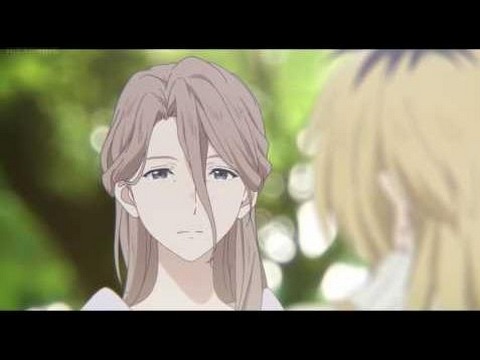
Mashiba is a standout amongst the most fascinating characters. In the film he's presented at an outsider, has to some degree random cooperations with the team, and sticks around as outcast glimpsed from within. He's a mystery in all regards of the word. In the manga, Mashiba has a more part in character development among the characters. Particularly Ishiada's character .

Mashiba had a whole chapter committed to him. In this part, he recollects his past and how his essential objective of turning into an instructor, was to just watch the children who harassed him have their children be worth nothing. He needed indirect vengeance as it were. Mashiba was tormented due to his eyebrows. They're thick and bushy. So as a child, he would shave them off and detest them. Be that as it may, tragically, this causes all the more tormenting. Which drives him to loathe bullies. Anyway, the reason I specify the greater part of this is on the grounds that the scene in the motion picture, Mashiba just reprimands Ishida with his words. Not at all like in the manga; where he physically punches Ishiada. Besides that he is really loyal and a close friend to him in the manga than in the film.

Basically the one important role or significance he had vanished it in the film, making him a nobody.

The ending of the film all in all annoyed me. It was lovely as it demonstrates all the "X's" fell off of everyone's. It demonstrated every one of the companions Ishida made. It indicated Ishida opening up to what his new life is and tolerating that he's not the only one any longer. He does not have a reason to die anymore. But the film missed out on a lot of details. The mangas finishing is around 2 parts in length. It covers the objectives of our characters and why they need to do them, it indicates happy and important moments, which the film did not include, ruining the entire experience.
In the film, It doesn't precisely specify about the characters hobbies or personalities all in all. Like how Ueno and Sahara are Fashion Designers. Ueno is known for the clothes she plans. Sahara ends up behind Ueno.

The film likewise doesn't mention Nagatsuka truly appreciates films. He leave to get all of Ishidas companions and makes a film for him. Other than that he wants a career in film too!

How Shouko Nishimiya began to learn from Ishidas mother on the best way to trim hair. Shouko needs to end up a hair dresser because of the experiences she has as a child.

Everything was rushed and chopped down. We were acquainted with characters that didn't have a considerable measure of merit to them. I felt like the entire film was simply utilizing these characters as a ploy to concentrate all the consideration on a specific subject, instead of the considerable number of characters themselves. If I hadn’t read the manga , I think I would have been lost, like what is going on here?

Particularly the part while everything is black but a hole is left and shows two individuals strolling. It makes you think, like why was that there in the first place? I can't make sense of it but I believe it's a gesture to the manga finishing; a completion in which Shouko and Ishida stroll into their schools coming of age ceremony with their hands together, but it makes no sense.

Overall the artwork of the film was spectacular as compared to the manga, which made it a good animation. But the manga didn't match with the film, and the film missed out on a lot of important point. Which in my opinion made it less worthy.
Refrence for facts and figures:
http://koenokatachi.wikia.com/wiki/Koe_no_Katachi
0 notes
Text
Styles and Techniques: Making of Naruto
Naruto (ナルト) is a Japanese manga series written and illustrated by the Mangaka, Masashi Kishimoto. It tells the story of Naruto Uzumaki, an adolescent ninja who is a brash and reckless ninja, searching for recognition from his peers and the village and also dreams of becoming the Hokage, the leader of his village. The story is in two parts, the first set in Naruto's pre-teen years, and the second in his teens.

The manga was adapted into an anime television series produced by Studio Pierrot and Aniplex, which broadcast 220 episodes in Japan from 2002 to 2007; the English adaptation of the series aired on Cartoon Network from 2005 to 2009. Naruto: Shippuden, a sequel to the original series, premiered in Japan in 2007, and ended in 2017, after 500 episodes.
Tetsuya Nishio was the character designer for Naruto when the manga was adapted into an anime series; Kishimoto had requested that Nishio be given this role. Directed by Hayato Date, and produced by Studio Pierrot and TV Tokyo, the Naruto anime premiered in Japan on TV Tokyo October 3, 2002 .

The total cost of a single episode of Naruto is between $100,000 USD and $300,000 USD, which includes:
Original work - 50,000 yen ($660) Script - 200,000 yen ($2,640) Episode Direction - 500,000 yen ($6,600) Production - 2 million yen ($26,402) Key Animation Supervision - 250,000 yen ($3,300) Key Animation - 1.5 million yen ($19,801) In-betweening - 1.1 million yen ($14,521) Finishing - 1.2 million yen ($15,841) Art (backgrounds) - 1.2 million yen ($15,841) Photography - 700,000 yen ($9,240) Sound - 1.2 million yen ($15,841) Materials - 400,000 yen ($5,280) Editing - 200,000 yen ($2,640) Printing - 500,000 yen ($6,600)
Naruto is basically animated by 2D animation unlike Hollywood which uses 3D animations now a days.
Artists or animator use 2D animation through computer softwares to create locations, characters, effects and more.
In the early era of animation, it was done by taking photographs of drawings on paper and then placing them on transparent acetate sheets called cels.

This process was deserted after the birth of computer systems, with it came the whole process of computer animations. Through computer animations artists were able to create digital animations and were able to control the image in any way they pleased. As compared to animating by hand, computers were more effective and saved up time.
Even though for a 2D animatior basic drawing skills are needed, but almost 70-80% work is done on computer systems and software.
The animation softwares have a huge variety of features which aid the artists to control the image, helping it to look in any way the animator wishes. It may be fine tuned with the help of timing tool or may have a rough look to it as well.
Having a digitized animation process has its benefits as well, compared to the old technique. You can save and load the work, as all computerized documents and re-edit the animations if it didn’t look appealing. Unlike the old technique where you had to re-do the entire process all over again.
If an artist is skilled in 2D animation, he has a vast collection of special effects he can always use in his animations.
As with all advantages 2D animations has its disadvantages. The better the 2D animation program the higher the difficulty level and practice you need. To be a good 2D animator you would need to know how to use various programs and all the tools in the software.
Here is the whole process the Naruto Animation has to go through:

In the anime most episodes were worked on in advance, but were finished the week before it came out. The director made a story board the week (or weeks sometimes) before and the writer wrote the lines beforehand there was some more prep, but the actual animation was all done during the week.
Key animators hand draw sketch animations that are later drawn over with black lines.
The animation is delivered to the team that digitizes the animation then colors it. The director checks the animation and tells the team what changes needed to be made. The cycle goes on for about a week until they finish.
While the animators are drawing the voice actors and sound designers get to work. The sound designers use every day objects to create sounds that are used in the anime. The voice actors have to meet in the sound design building to deliver their lines. After which everything is edited and synced together.
‘Studio Pierrot’ hires different animators per episode. Some of their famous animator are:
Masayuki Kouda
His distinguished style trait is the rounded eyes of the characters.

Masahiko Murata
He is more attuned with the dark and mysterious story-line, having a visually appealing artwork which brings in the audience. He also plays and incorporates shadows as well.

Gorou Sessha
His strength is with the action packed fighting scenes, which need high speed animation.

Here is a little sneak peak at Studio Pierrot, with ‘Dave Whitenberg’ who dubs the English version voice of Kakashi.
youtube
References:
Crunchyroll.com
Wikipedia.com
Gamedesigning.org
Quora.com
0 notes
Text
A Nightmare Before Christmas: Burton’s masterpiece
The Nightmare Before Christmas (1993) Is a creation you would anticipate from a motion picture that was made before CGI, a musical, and one that highlights stop motion animation!

It is very gothic, christmassy and halloweeny. Tim Burton's Nightmare Before Christmas is a Halloween-Christmas crossover that is uncontrollably unique and eye catching. The cinematography, sound track, and the character advancement are generally very astounding!.


The setting of the film is Halloween Town, a strange scene possessed by a town of incomprehensible looking animals who depend on the authority of Jack Skellington, straight from Halloween. The opening arrangement sets the tone and is completely shocking. While the demons observe, Jack stays withdrew and unfulfilled; he obviously longs for greater and better occasions. Jack, with his spooky pooch Zero, discovers a woods of Holiday Trees, discovers Christmas Town down the rabbit gap, and is always beguiled by the brilliant and fascinating Christmas occasion. He is so awed by Christmas that he is resolved to move in on Sandy Claws and his activity, overhauling his interest in praised occasions. As you may presume, things turn out badly as Jack and his hideous team are not prepared to deal with an holiday so extraordinarily different from theirs.

It is one of Disney’s classic work, a must see for all to experience. I have never seen a fantasy film that is without a moment's delay so visually pleasing and emotionally dead. Scored to a progression of romantic neo-Kurt Weill, melodic numbers by Danny Elfman, Nightmare is filled, in every detailed frame, with sights and sounds designed to influence your senses. Utilizing a modern update of the stop-motion puppet animation familiar from the Rankin-Bass TV Christmas specials of 25 years back, Burton and his executive, Henry Selick, pack the screen with ghouls who scramble around minature sets that are uncommon in their strange glory. However none of the little beasts at any point move toward becoming characters, Nightmare gives a sad furor of development.
The story is centered on his favorite kind of character, a misfit who wants to do well, but has been gifted by fate with a quirky personality that people don't know how to take.

Some parents may raise hell over the film's dark mischief. Santa is held hostage by a sack of slime and bugs called Oogie Boogie. And Jack unknowingly terrifies kids by delivering such presents as a shrunken head and a toy snake that devours Christmas trees. Even Sally, Jack's rag-doll love, thinks he may be going too far, which leaves jack to become sad.
The film need parental advisory for younger children since the characters might be scary for them to watch. But children 13 above will love it. This film is for adults of all ages as well and is a classic in all sense.
The film used the stop motion animation technique, frame by frame which took 3 whole years just to shoot it. With 18 animator to work on the scenes, basically figures or puppets were used and the locations well all mint sized as well. Unlike Japanese animations, the figures were made and shot by hand. There was no digitization whats so ever, and it was not a paper coming to life. More than tat because 3-D figures were used, it had a more life like feel to it as if the characters were real in life. Here is a snippet of Tim Burton’s Interview about stop motion:
youtube
If you’re interested in knowing in depth details of the film look no further!
youtube
0 notes